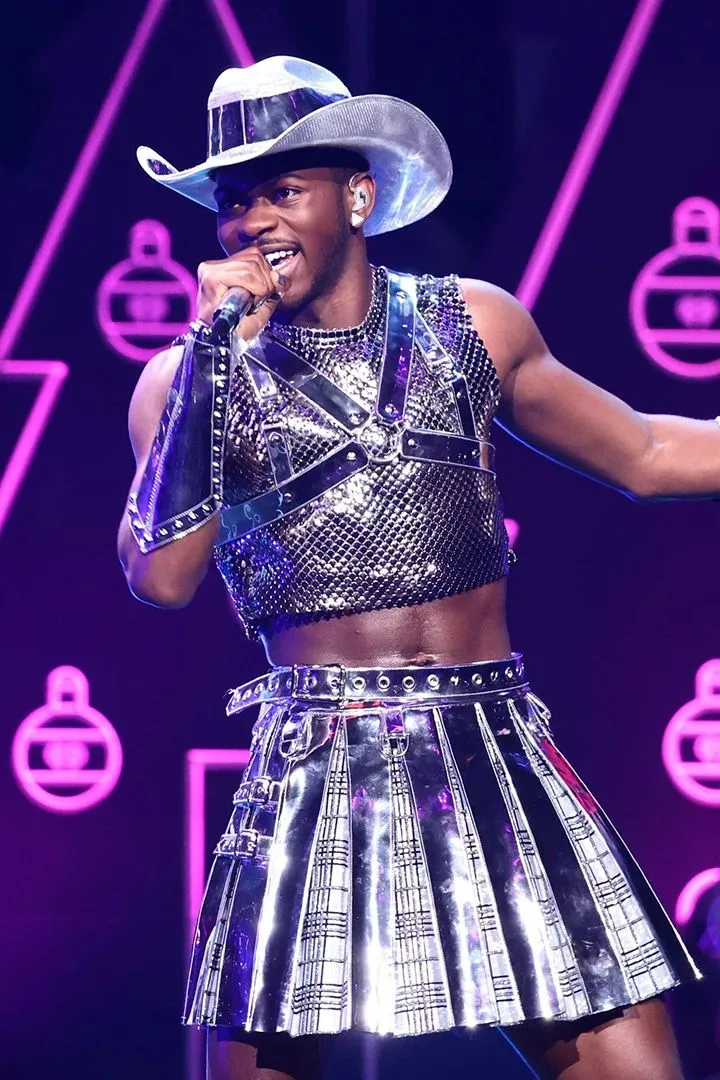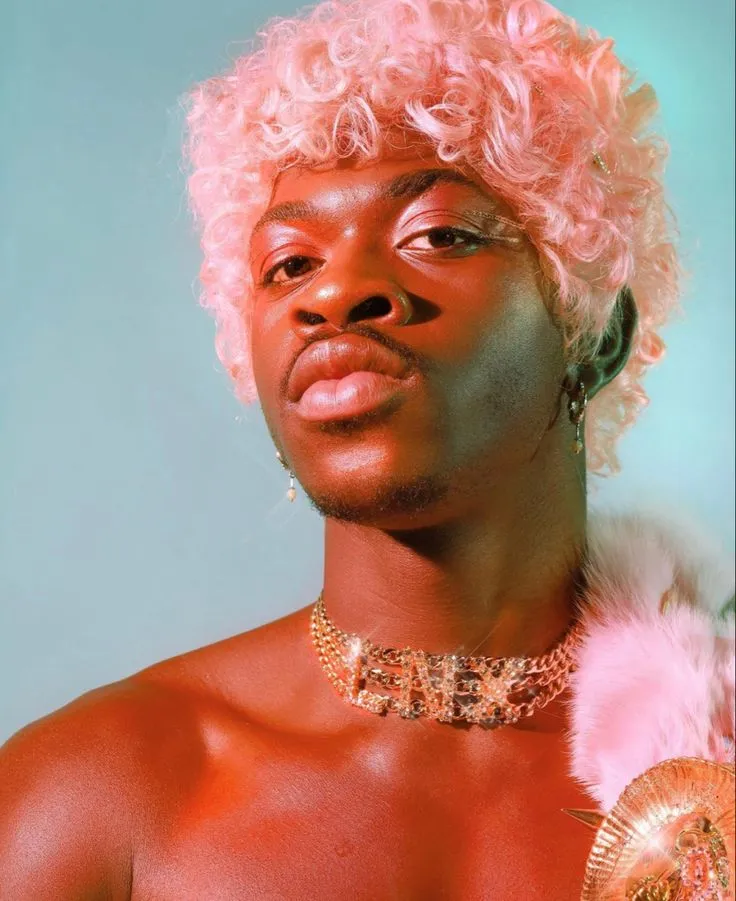

From Country to Queer: The Explosive Colors of Lil Nas X
The Rise of a Revolutionary Artist
In 2019, the world was introduced to a young man who would go on to shake the very foundation of the music industry—Lil Nas X. At first, the country-rap fusion of “Old Town Road” felt like a novelty, a catchy tune that blended cowboy imagery with trap beats. But little did the world know that this viral hit would mark the beginning of something much larger than just a momentary chart-topper.
Lil Nas X wasn’t just introducing a new sound; he was rewriting the rules of what genre could mean, of what representation in music could look like, and, most importantly, of how an artist could be unapologetically themselves. Fast-forward to today, and Lil Nas X is more than just an artist. He’s a cultural icon, a symbol of freedom, rebellion, and queer empowerment—and his evolution is nothing short of a revolution.
His journey from country music charts to the global queer icon we know today is explosive, colorful, and undeniably curious. But beyond the rainbow flag and viral social media moments, Lil Nas X is wielding his fame to challenge conventional norms, expose hidden biases, and create a world where being authentically yourself is not just celebrated—it’s demanded.
Blazing a Trail: Challenging Expectations and Defying Norms
To understand the monumental impact of Lil Nas X, we must first look at the journey that has defied expectations and shattered long-held stereotypes in both the country and rap music worlds. When “Old Town Road” first dropped, few could have predicted the seismic cultural shift that would follow. After all, country music has long been viewed as a bastion of conservative values—a genre where gender roles, traditional masculinity, and straight, white, heteronormative ideals reign supreme.

But in the face of this longstanding tradition, Lil Nas X saw an opening, a gap that no one had truly explored before: the intersection of hip-hop culture with the rural, cowboy imagery of country music. The song’s viral success was a direct challenge to the gatekeepers of the country music world, who initially rejected the track from the charts. But it wasn’t just the cross-genre blending that made the song revolutionary—it was also the subtle subversion of country music’s monolithic narrative.
With Lil Nas X, the country music genre wasn’t just about cowboy boots and pickup trucks—it was a space where blackness could thrive, where queerness could exist, and where fluidity could take root. The countryside, once thought of as exclusively reserved for straight white men, became a canvas for something far more inclusive and multidimensional.
As Nas’s rise to fame continued, the trap-infused, genre-defying sound that had made “Old Town Road” a global anthem only began to represent one part of his artistic persona. What truly set him apart, what began to earn him his status as a queer icon, was his unflinching commitment to visibility and his bold rejection of conformity. The music video for his 2021 smash hit “MONTERO (Call Me By Your Name)” was a daring exploration of sexuality, identity, and power, giving a loud, proud platform to queer expression in a way that had never been seen in mainstream pop culture before.
Challenging Queer Representation in the Mainstream
In a world where queer representation in the mainstream music industry was still often limited to stereotypical, formulaic portrayals, Lil Nas X blew the doors wide open. In the “MONTERO” video, he danced with demons, kissed men, and wore unapologetically extravagant outfits that defied the usual expectations of masculinity. The music video was provocative, yes, but more importantly, it was a celebration of freedom—the freedom to love, to express, to desire.
In doing so, Nas not only challenged the heteronormative imagery of the music industry but also disrupted the narrative of what it means to be a black, gay man in the public eye. While queer artists of color had historically struggled to find a platform in mainstream spaces, Lil Nas X built his own, subverting the expectation that queer people, particularly black queer men, should remain in the shadows of the entertainment world. The viral success of “MONTERO” was a moment that demanded the world to reckon with queerness in all its diverse forms.

And still, he wasn’t done. As he continued to push boundaries, Nas came to embody the complexity and fluidity of the modern queer experience in a way that hadn’t been articulated so viscerally before. His music is not just about his journey—it’s a journey that reflects a larger cultural shift, a shift in which queer people are no longer apologizing for their existence, but instead demanding to be seen and heard.
The Explosion of Color: A Visual and Sonic Revolution
Lil Nas X’s rise from the country charts to mainstream stardom is a study in what happens when an artist completely rewrites the rulebook—from the music itself to the visual identity that accompanies it. There’s an undeniable explosiveness in his work. Colors, bold imagery, and visual storytelling play a huge role in his appeal, making his music videos, performances, and album artwork feel like art exhibitions as much as they do musical statements.
Take his debut album, “Montero”, for instance. The album was a sonic and visual explosion—from the vivid pinks and purples that defined its cover art to the flamboyant costumes and visceral, dreamlike worlds explored in his music videos. Nas’s aesthetics are not just about creating eye-catching moments; they’re about giving a voice to the complexity of queerness, of identity, and of liberation. He uses color as a way to represent the many facets of himself, making every music video, every performance, a manifesto of self-expression.
With each release, he pushes further into unapologetic self-expression, drawing on references from pop culture, mythology, and even religious iconography, challenging the very notions of what is acceptable and appropriate in mainstream music. His use of color, like his use of sound, is deliberate—it’s a means of exploring freedom in every form it can take, a stark contrast to the often muted tones that have dominated traditional music scenes.
But this isn’t just about style—Lil Nas X is creating a new narrative with every song, every outfit, every visual moment. Whether it’s defying religious iconography in the “MONTERO” video or reclaiming the cowboy image in “Old Town Road,” Lil Nas X is asserting his right to exist and thrive within any space he chooses. The explosive colors that adorn his career are not merely for show—they are a loud, bright, and unmissable call for the world to stop ignoring queer voices and start embracing them.
Lil Nas X: A Beacon of Empowerment for the Queer Community
Lil Nas X has, in many ways, become a beacon of empowerment for young queer people all over the world. His message is clear: You can be who you are—without apologies, without compromise. From country music to rap, from viral hits to outspoken activism, he continues to rise as an unflinching symbol of what it means to live in your truth.
But beyond the charts and the headlines, Nas’s true legacy is his willingness to be both a trailblazer and a protector for those who have been told they are too much, too loud, or too different. His journey—from country to queer, from underdog to icon—is a roadmap for anyone who feels that they don’t quite fit the mold. It is a call to those who feel invisible to step into the light, to live out loud, to demand their space in a world that has often tried to silence them.
As Lil Nas X’s influence continues to expand, one thing is certain: he’s not just changing music—he’s changing the culture. With every new song, every bold move, and every colorful explosion, he continues to rewrite the narrative of what it means to be queer in the public eye, proving that when you embrace your true self, the world can’t help but notice.


















